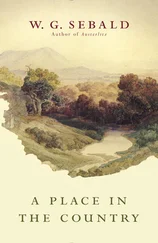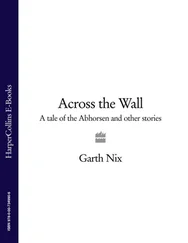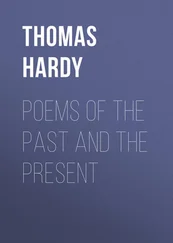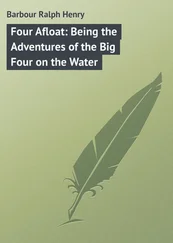15 Giulietta’s BirthdayPT, H. See note on “Didsbury” above.
16 Time Signal at TwelvePT, AK50. See note on “Didsbury” above. Lejzer Ajchenrand: a Jewish poet born in Demblin (Poland) in 1911 who emigrated to France in 1937 and served in a French volunteer battalion. He was interned under the Vichy regime and, in 1942, fled to Switzerland, where he was again interned. Although Ajchenrand spent the rest of his life in Switzerland, he was never granted citizenship. He died in the town of Küsnacht, on Lake Zürich. His mother and sister were murdered by the Nazis, and the Shoah remained the subject of a poetic oeuvre composed entirely in Yiddish. Several of his poems appeared in the German literary magazine Akzente . The best known of his nine books of poems is Aus der Tiefe ( De Profundis , 1957), first published in Paris in 1953 and reprinted with German translations in 1998. Melk: a town in Lower Austria and the site of a famous Benedictine abbey, founded in 1089. Between April 1944 and May 1945, 14,390 mainly Jewish prisoners were deported to the Melk concentration camp, a sub-camp of KZMauthausen. It is thought that some five thousand prisoners were murdered there. The crematorium is all that remains of the camp today. If no one asks him … knows not: The phrasing of the fifth stanza echoes a passage in Augustine’s Confessiones (XI, 14) in which the author ruminates on the nature of time, its absence, and eternity. “Quid ergo tempus est?” (“What then is time?”) he asks, and continues, “si nemo ex me quaerat, scio; si quaerenti explicare velim, nescio” (“if no one asks me, I know; if I wish to explain it to him who asks, I know not”).
17 Children’s SongPT, AK50. The poem, dedicated to Sebald’s niece, was first published in Reinbert Tabbert’s reminiscence of his friendship with Sebald in the magazine Akzente . It later appeared in a second article by Tabbert in a journal called Literatur in Bayern (no. 97, September 2009), this time with a short commentary linking the poem to the topography and mood of Sebald’s childhood memories of his daily route to school in his native Wertach.
18 Votive TabletSL.
19 LegacySL.
20 SarassaniSL. Title: Sebald’s spelling may be incorrect, but only if the title refers to the Sarrasani Circus, founded by Hans Stosch (alias Giovanni Sarrasani) in Meißen in 1902, and still in family hands.
21 Day’s ResiduePT, SL. Title: a psychoanalytic term (German: Tagesrest ) coined by Sigmund Freud in his book on the interpretation of dreams, Die Traumdeutung (1900). The term describes the way the residual material of a day’s experience — thoughts, impressions, and unfinished tasks — may trigger the “dream work” of the following night.
22 Border CrosserSL. witch’s thaler: a gold or silver coin whose currency magically alters in accordance with the mint of the country in which its owner is a resident.
23 Lay of Ill LuckSL, H. black bird: the combination of fox and crow (or, in German, Rabe: raven) is likely to be associated in the reader’s mind with Aesop’s ancient Greek fable “The Fox and the Crow,” or with its later French version by Jean de La Fontaine. However, it is in Leoš Janáček’s opera The Cunning Little Vixen (German: Das schlaue Füchslein; in Sebald’s poem the fox is also a “Füchslein”) that the “little vixen” escapes. The “monosyllabic creature” of the translation is, in German, einsilbig , which can also, figuratively at least, mean “taciturn.” “Monosyllabic” at least captures Mistress Crow’s “Caw!” which lost her the cheese in the fable. The final stanza, however, may contain a nod to the taciturn “black bird” in Edgar Allan Poe’s poem “The Raven”: possibly a figure closer to Sebald’s own melancholy muse.
24 Memorandum of the DivanSL.
25 Il ritorno d’UlisseSL. Title: probably a reference to Claudio Monteverdi’s opera of 1640, whose full title is Il ritorno d’Ulisse in patria . The title of the final section (“Il ritorno in patria”) of Sebald’s prose work Schwindel. Gefühle (1990; Eng. trans. Vertigo , 1999) also appears to echo the title of Monteverdi’s opera. in scattered spots with the black paper hearts of men shot by the arquebuse: the German (“an zerstreueten Orten waren schwarze Papierherzen arkebusierter Menschen”) is from Jean Paul Richter’s novel Titan (vol. 1), in Sämtliche Werke . Bd. 2, Berlin: 1827 (p. 115); translated into English by Charles T. Brooks as “in scattered spots were the black paper hearts of men shot by the arquebuse,” in Titan. A Romance , London: 1863 (p. 36).
26 For a Northern ReaderSL.
27 Florean ExerciseSL. Title: there is more than one reference in Sebald’s work to the name of the Northamptonshire village Flore. In the second chapter of The Rings of Saturn , for example, the narrator’s neighbor Frederick Farrar is sent in 1914 to a prep school near Flore in Northamptonshire. Flore is also mentioned in the poem “Pneumatalogical Prose,” in this volume. the Dardanian gods: the final lines cite an Etruscan inscription discovered in North Africa by the French Latinist and Etruscan scholar Jacques Heurgon. The Dardanoi formed one of the two royal houses of ancient Troy, and the rulers of Rome would sometimes claim, through their founder Aeneas, Dardanian descent. In this poem, then, the apparently unremarkable village of Flore emerges as the unexpected repository of a genealogical current that arose in mythical northwestern Anatolia, passed through Troy, Carthage, and Rome, and that continues to exert metaphysical pressure on the imagination in twentieth-century Northamptonshire, one and a half millennia after the Romans left.
28 Scythian JourneySL. Title: in classical antiquity Scythia was the area to the north of the Black Sea and the Caspian Sea. with the birds and fishes: reminiscent of lines in the second poem in book 1 of Horace’s Odes: “omne cum Proteus pecus egit altos visera montis, / piscium et summa genus haesit ulmo, / nota quae sedes fuerat columbis” (“when Proteus drove all his herd to visit the high mountains / and the race of fishes lodged in the elm-tops / which once were known as the haunt of doves”). Berecyntian horn: mentioned in Horace’s Odes (bk. 1, ode 18), but also to be found in Catullus, Ovid, and other classical writers. Berecyntus was the name of a mountain in Phrygia, sacred to Cybele. Penates: guardian deities of the household and the state.
29 Saumur, selon ValérySL. Title: Saumur, as seen by Valéry. There is a National Equestrian Academy at Saumur, home to the world-renowned Cadre Noir. In his Cahiers ( Notebooks ), the French poet Paul Valéry compares mental and aesthetic training with the equestrian art of dressage: he aims to write a treatise on “le dressage de l’esprit” (“dressage of the mind”), to be called “Gladiator.” In the Cahiers (6, 901), he also mentions the mythical centaur as a model of perfect control. Another model was the Saumur equestrian instructor François Baucher (1796–1873), of whom Valéry, in his essay “Autour de Corbot,” recites an anecdote with which Sebald was evidently acquainted. Baucher dazzled one of his favorite pupils at Saumur by appearing as “un Centaure parfait” (a perfect centaur): “Voilà … Je ne fais pas d’esbroufe. Je suis au sommet de mon art: Marcher sans une faute ” (“There … I’m not showing off. I have reached the summit of my art: Walking without error ”), in Paul Valéry, Œuvres 2 , Paris: 1960 (p. 1311).
Читать дальше












